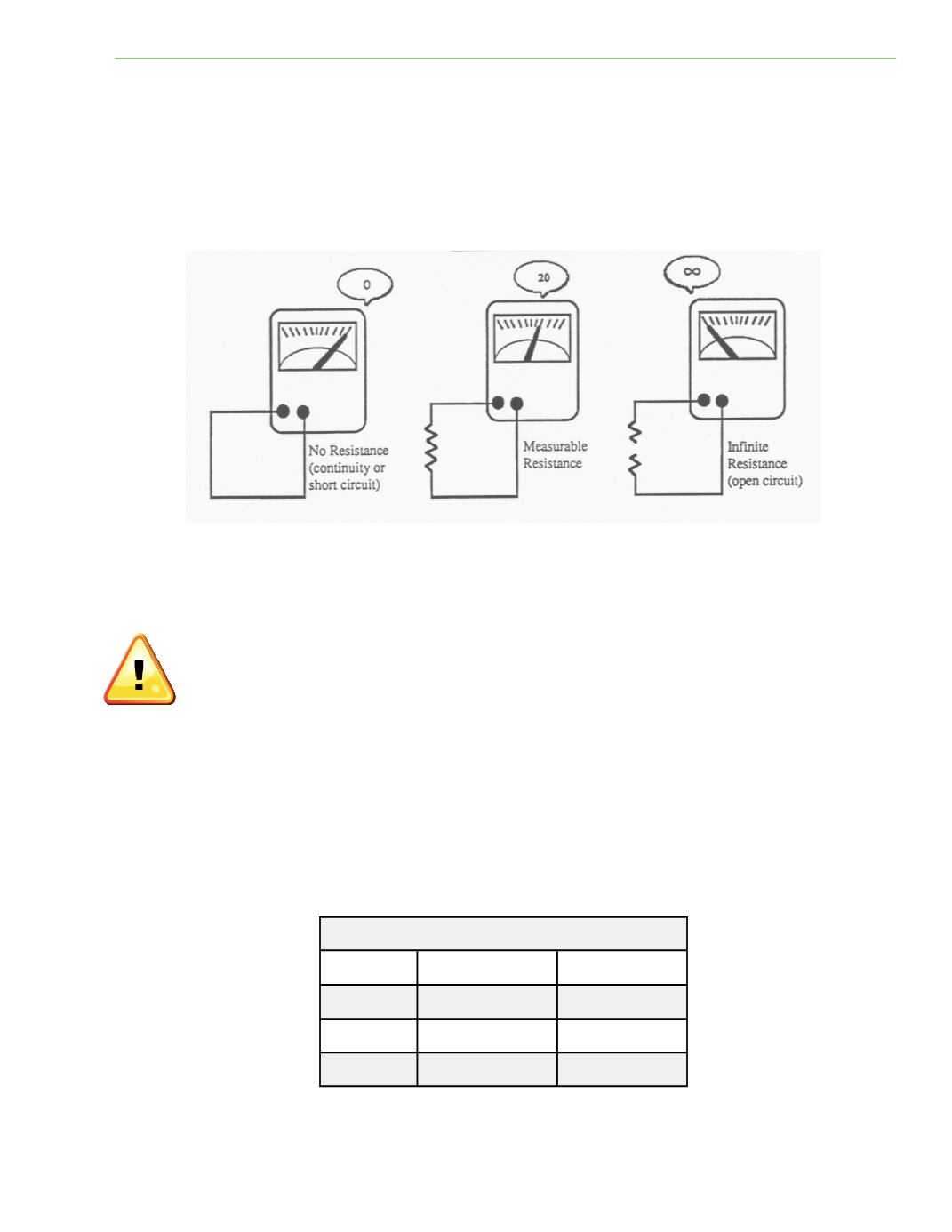

Electrical Theory & Applications for HVACR
Chapter 6: Troubleshooting
Page 111
OHMMETERS
Ohmmeters are used for two primary purposes:
1. To measure a circuit for conƟnuity (a complete path for electron flow)
2. To measure the amount of resistance in a circuit or component
When measuring for conƟnuity, the circuit is said to be open (infinity measurement) or completed or
closed (no resistance). Fig. 6‐4
Fig. 6‐4
An ohmmeter is only used on a circuit that has been disconnected from the power source. The
ohmmeter has its own power supply (baƩery) to make resisƟve measurements.
Most ohmmeters are protected by a fuse, but connecƟng an ohmmeter to a live circuit can
sƟll damage the meter.
When tesƟng a circuit for conƟnuity, test leads are connected in much the same way as the voltmeter
leads in the example below. When tesƟng from L1 to N (with the power off) the meter should show
conƟnuity or low resistance through all closed controls and safeƟes. Motor windings can be tested
individually for the correct resistance value. Disconnect the component being checked from the
circuit to prevent feedback from parallel circuits that can cause a false reading. Check manufacturer
specificaƟons for the resistance of any power consuming devices. Fig. 6‐5
1/8
4.5
16
1/6
4.0
16
1/5
2.5
13
1/4
2.0
17
HP Run Start
Fig. 6‐5










